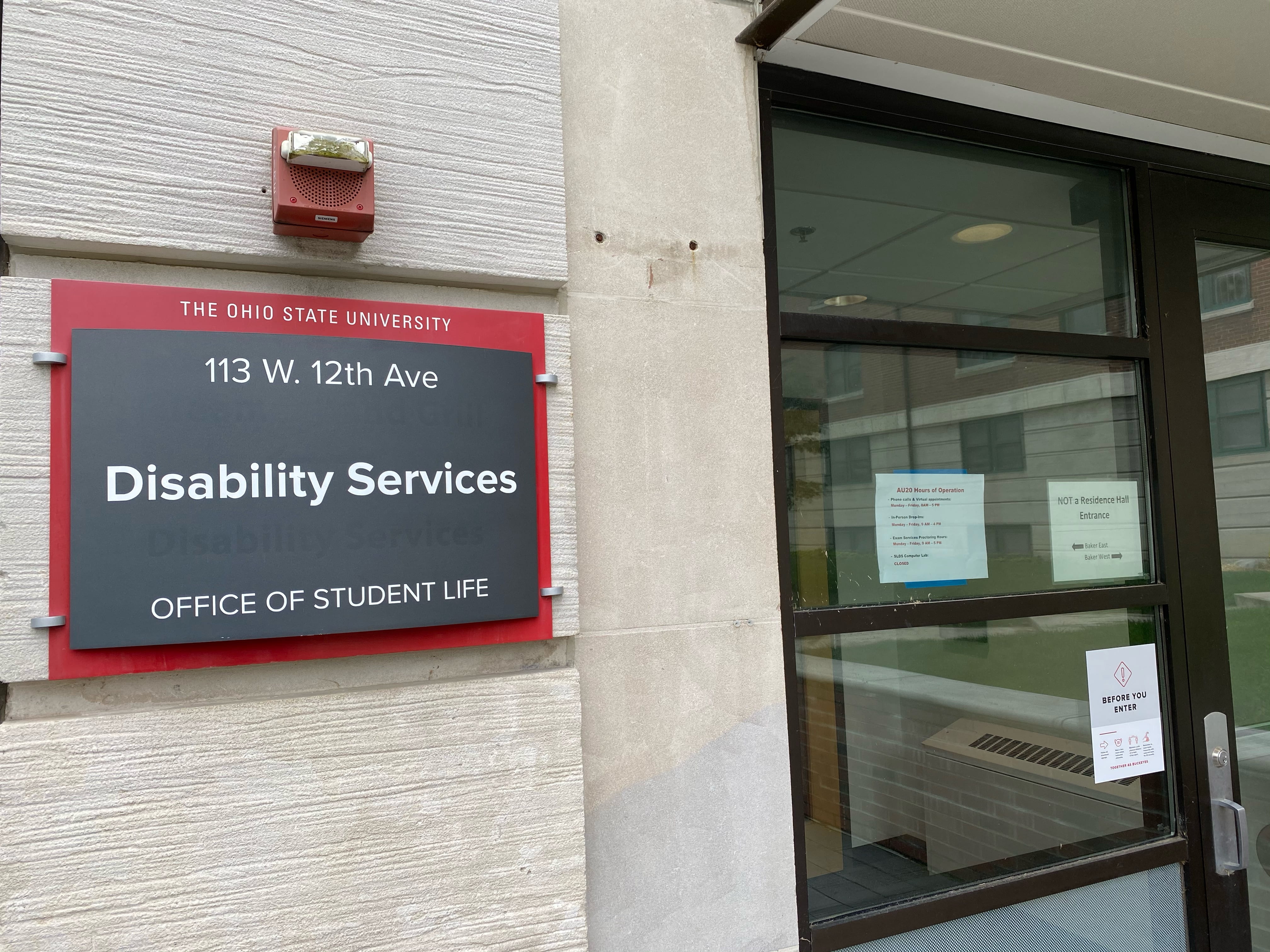
Ohio State students with disabilities are adjusting to new accommodations for virtual learning. Credit: Mackenzie Shanklin | Assistant Photo Editor
Online classes are decreasing commute times, allowing students to rewatch live lectures and keeping the university community safe from COVID-19; however, for students with disabilities, the technological interface and isolation pose difficulties they don’t face in a typical semester.
As a majority of Ohio State courses have moved to distance learning, Scott Lissner, the university’s Americans with Disabilities Act coordinator, said his office is working to provide students with disabilities a comprehensive education while also keeping them safe during the pandemic. For some of those accommodations, online learning is making the process easier.
“If everybody is [taking classes] online, it removes a lot of challenges and simplifies things. We know how to integrate captioning in Zoom. We know how to integrate ASL interpreting into Zoom,” Lissner said.
CarmenZoom offers captioning of class and lecture recordings, but did not offer live, automated captioning until recently.
Amy Shuman, a professor in the Department of English and former director of disability studies in the department, said although she records all her classes and uploads the videos with transcripts to make them more accessible, she hasn’t seen a widespread shift toward the practice.
“I’ve talked to some of the older faculty who have hearing aids, and they’re frustrated by the lack of the closed captioning,” Shuman said.
Lissner said in an email that Zoom tested live, automated captioning over the summer and Ohio State evaluated the system before releasing it Friday. A Friday press release from Ohio State’s IT department stated that live captioning is a setting Zoom meeting hosts must manually enable for their classes.
Lindsay Rogers, a first-year in molecular genetics who is hearing impaired, said online classes are easier for her than in-person classes because professors can talk directly into her hearing implants via Bluetooth, but she’s had difficulty getting accommodations she typically gets each semester.
“I requested [note taking assistance] for this semester, and no one contacted me about getting any sort of note taking assistance,” Rogers said.
Lissner said students who do not have proper technology for their classes — such as small monitors or devices that cannot connect to hearing aids via Bluetooth — are sometimes able to borrow devices from the university. The university has screen-reader compatible monitors, for example, and high-quality speakers that can play sound at higher volumes.
Lissner said these loans are offered on a case-by-case basis depending on students’ specific disabilities. Students with disabilities are encouraged to participate in live class sessions and are provided with the materials necessary to successfully take part, he said.
“We work with faculty and students to make sure accessible versions of whatever is being presented on the shared screen are distributed to students who need them prior to class. So they can either open it up in another window or have a dual monitor setup,” Lissner said.
Hybrid courses and discussion-based courses can be difficult to replicate for students who require accommodations, but the ADA office tries to make students feel included while working virtually, Lissner said.
For example, if a student needs ADA accommodations in a hybrid class and is unable to attend in-person sessions, monitors can be set up in a circle around the student, with a wide angle camera used in the physical classroom. This creates an environment closer to that of an in-person class.
Isaac Meisner, a second-year in environmental policy and decision making, said having mostly online courses presents challenges with their mental illnesses.
“When you’re having classes that are completely online, it makes my mental disorders more difficult to handle just because I need that interaction with other people, and I’m not really getting it outside of where I live,” Meisner said.
Kayden Gill, a third-year in health sciences and co-president of Buckeyes for Accessibility, said as a wheelchair user and someone with a visual impairment, online courses present both positives and negatives. One of the main cons, Gill said, is it is harder to find ways to exercise without traveling across campus.
“From a visual disability standpoint, it’s a lot easier not to have to worry about finding the place in the lecture hall that you can see, or just always having something as large as your screen can make it is nice,” Gill said.
Students can register for accommodations on the Student Life Disability Services website.


